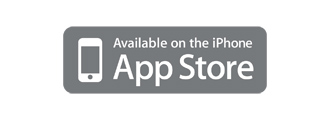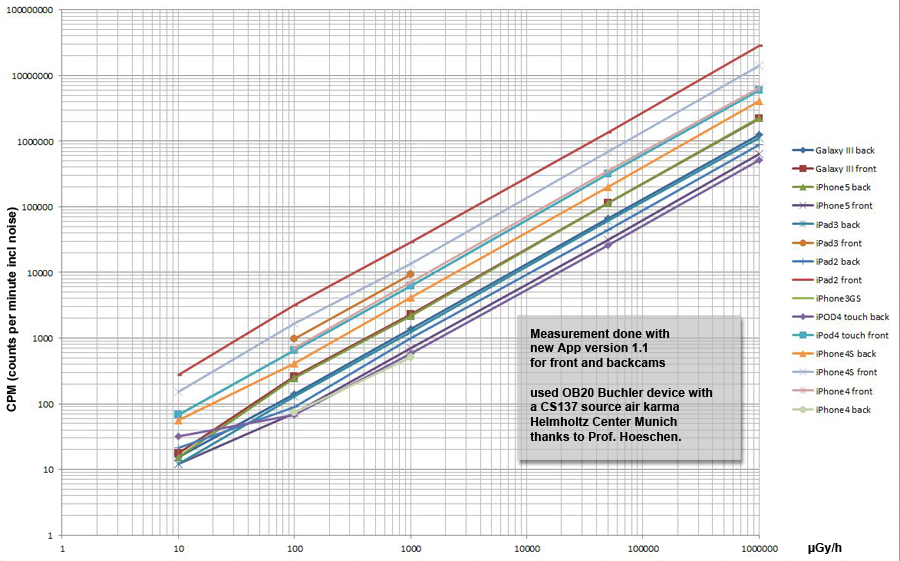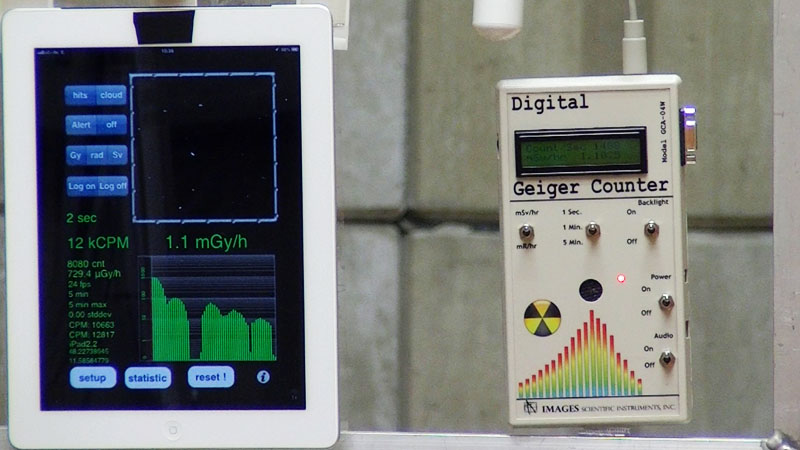RadioactivityCounterThe App is available in the App Store ! This iOS application is a real working radioactivity counter without any extra hardware needed ! Just cover the lens with a black paper and tape it there (Must be tight and light proof - don't put glue on the camera lenses!). It will turn your phone into a Geiger Mueller Counter to measure radioactivity after proper calibration. Important note: The camera sensor can measure gamma radiation (CS137 for example) and some beta radiation (depends on the energy if the beta rays can pass through the plastic parts - for example H3 or K14 are weak sources). It cannot measure alpha rays (like PO210...). We will give more infos here and prepare an instructional video on the usage. We did calibrations with several iPod2, IPhone 3GS, iPhone 4, iPhone 4S , iPad 2, Ipad3 and iPhone 5..X (now available in 2.2) devices at the Helmholtz Research Centrum, Munich (thanks to Prof. Dr. Christoph Hoeschen). We used a CS137 test source from 10 µGy/h till 1 Sv/h for each of the phones we had in the so called Buchler device, used for example for dosemeter calibration. The values are stored as a rough start on the application (all devices differ a little bit). For precise professional measurement the devices must be adjusted to the sensor which is possible with the expert setup (give us a call, e.g. email). For personal use the defaults should be sufficient (please give us feedback if you have problems). - Currrently the calibration of the latest iPhones .. iPhone X is not yet included - soon an update follows. Its using default settings instead. You can load older versions of the App if the phone is not supported in the newest version (due to App Store Limits) via iTunes. You also need to do a noise calibration which is automatically requested after the first start. After this, the background noise must be set. This is done after the calibration is finished, with a 4 or 10 minute measurement. You will be given instructions according to the results. Sometimes you need to repeat the noise calibration if the values get too high. | 

